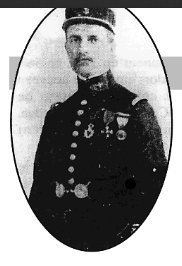Years of service 1914–1945 Education École Polytechnique | Awards Legion of Honour Rank Army corps general | |
 | ||
Born November 27, 1893Château-Gontier ( 1893-11-27 ) Died 10 March 1945, French Indochina | ||
Émile René Lemonnier (November 27, 1893 – March 10, 1945) was a French Army general who served during World War I and World War II. Stationed in French Indochina in 1945, he was beheaded by the Japanese during their March coup d'état.
Contents
Early life
Lemonnier was born to Emile Jean Lemonnier, a saddler by trade, and Marie Ernestine Fournier on November 11, 1893, in Chateau-Gontier in the Mayenne. He graduated from the College Chateau-Gontier in 1910 and entered the École Polytechnique in 1912.
Military service
In 1914 Lemonnier was commissioned as a Second Lieutenant in the 25th Artillery Regiment and received several citations. In 1918, he transferred to the French Colonial Forces. In 1920 he was made a Knight of the Legion of Honour. From 1925–1936 he served in French West Africa. He left France for the last time in 1937.
World War II and death
On March 9, 1945, General Lemonnier while commander of the Lang Son area received an invitation from the Japanese forces to a banquet of the headquarters of the division of the Imperial Japanese Army. Lemonnier declined to attend the event, however he allowed some of his staff to attend the banquet. The French staff officers present at the banquet were taken prisoner by the Japanese. Lemonnier was subsequently taken prisoner himself and ordered by a Japanese general to sign a document formally surrendering the forces under his command. Lemonnier refused to sign the documents causing the Japanese to take him outside of Lang Son where they forced him to dig graves along with French Resident-superior (Résident-général) (Tonkin) Camille Auphelle. Again Lemonnier was ordered to sign the surrender documents and again refused. The Japanese then beheaded him.
